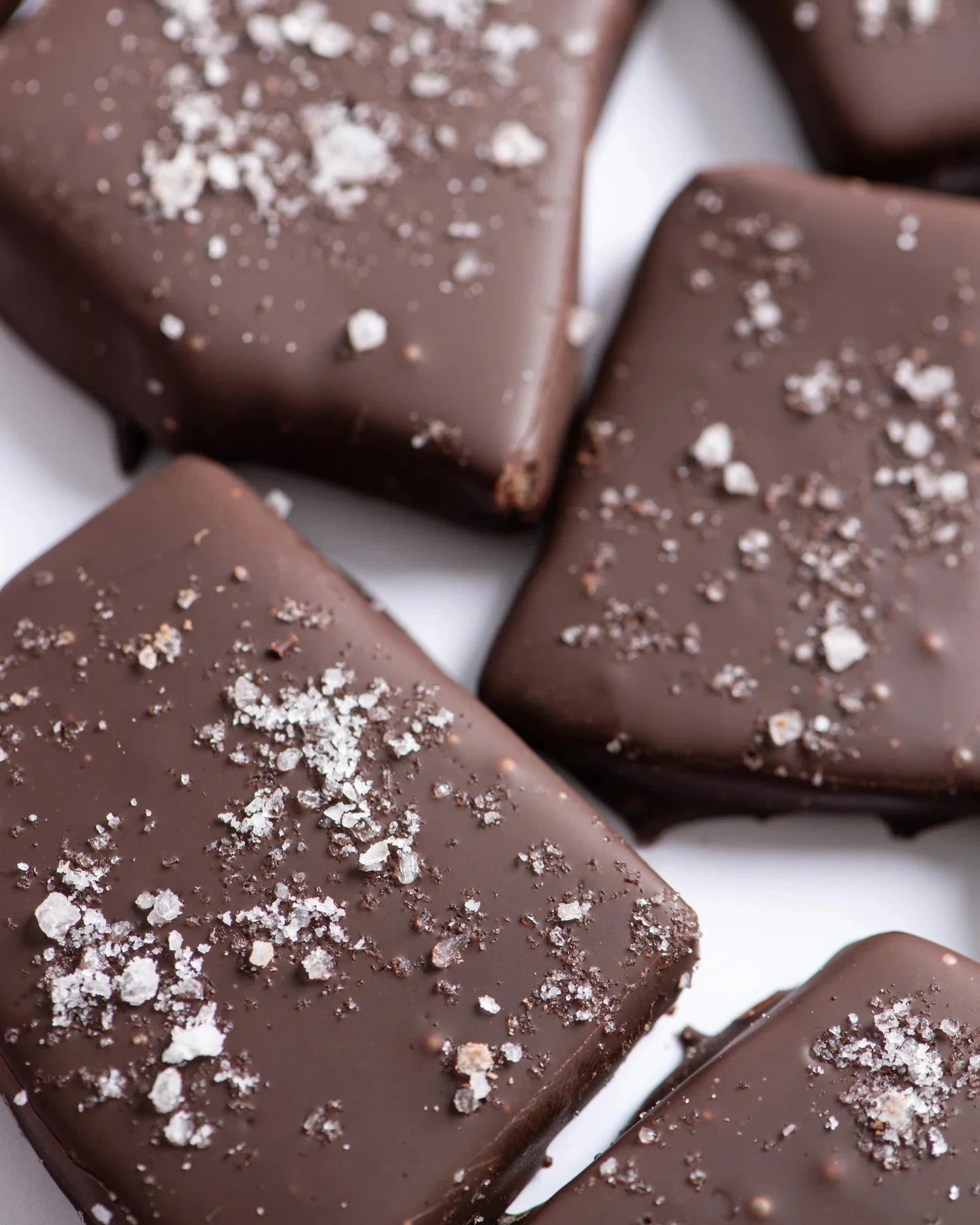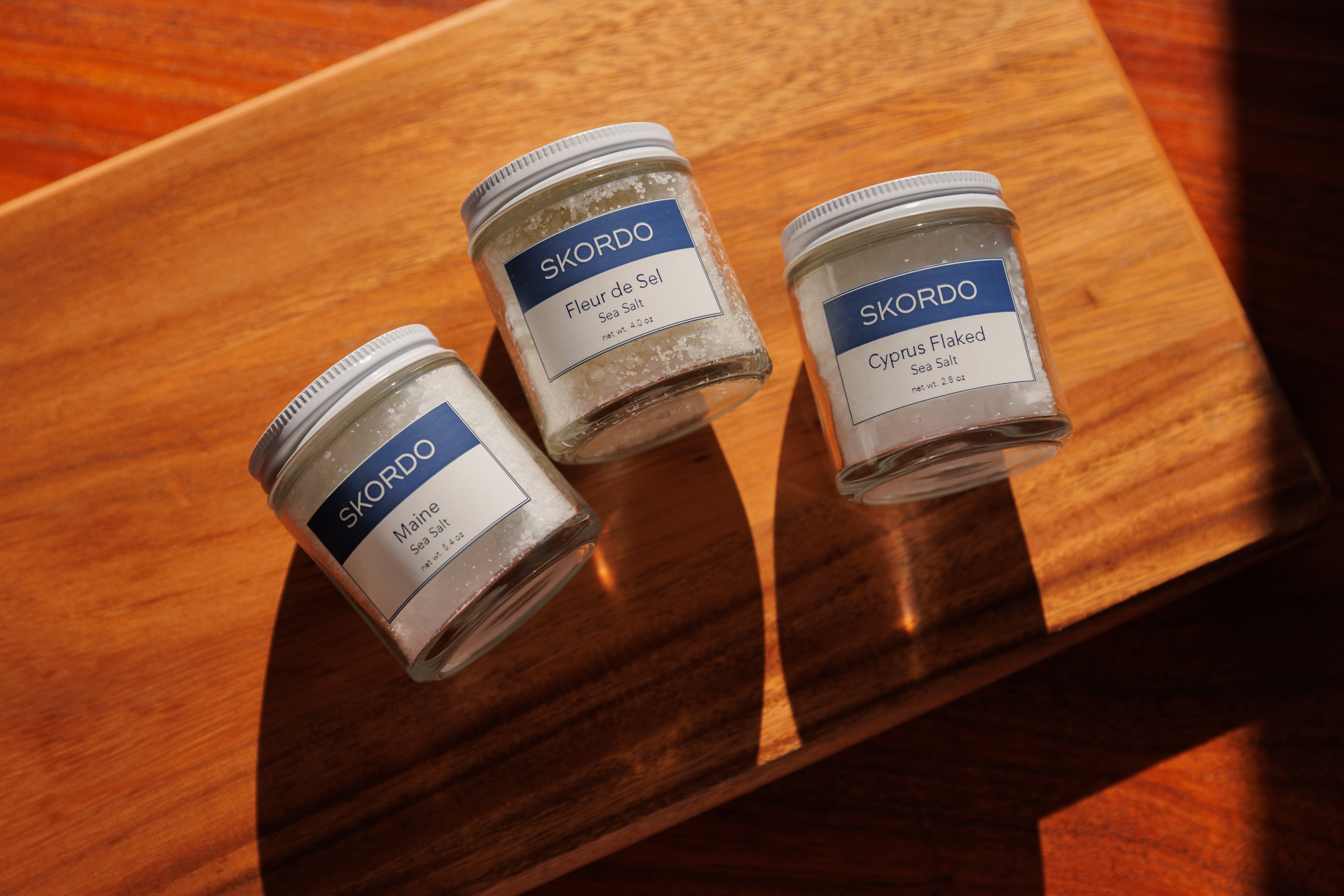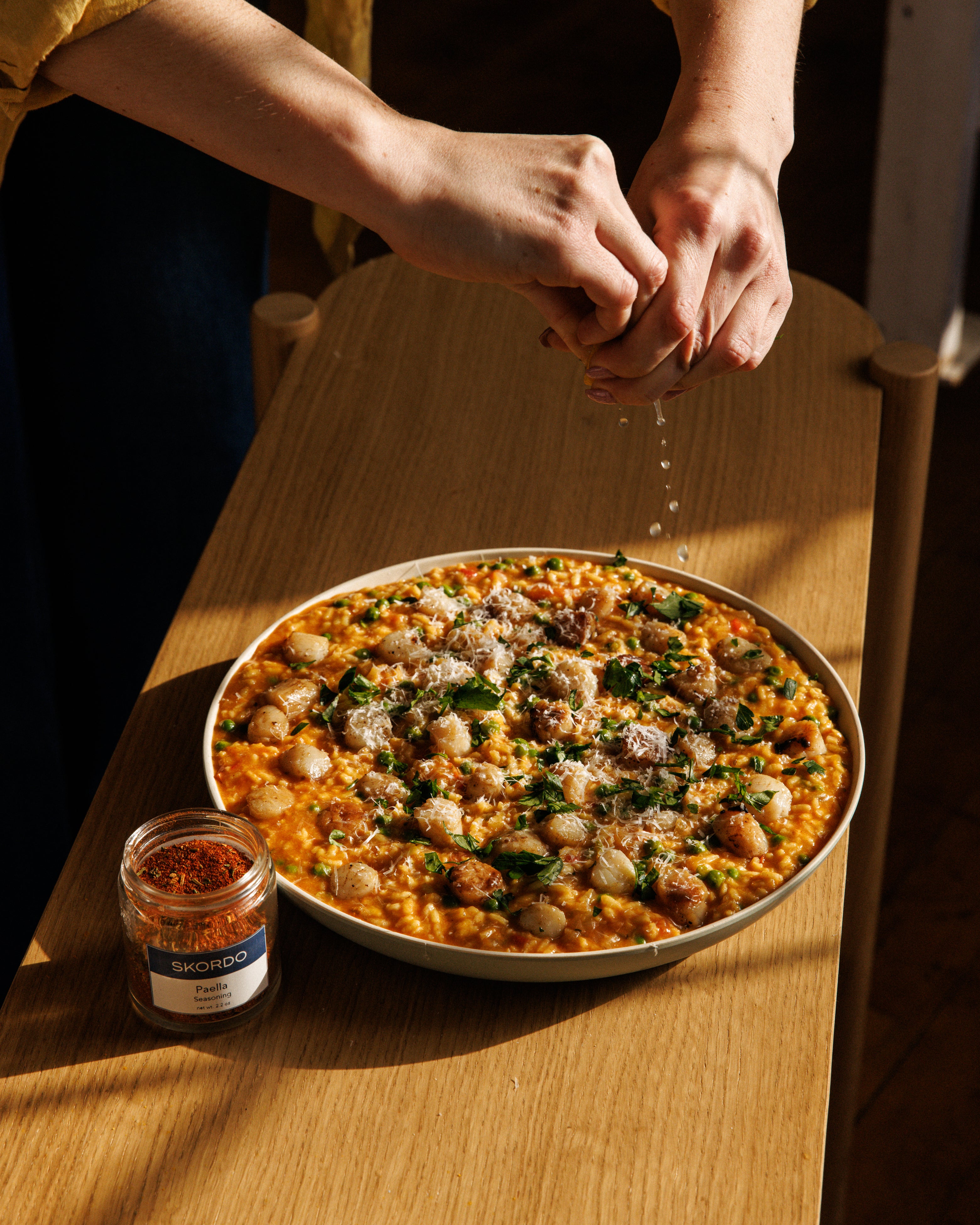Salt, at first glance, appears to be a simple mineral but it has the power to transform and elevate the flavors of nearly any dish. Among the myriad of salt varieties, three distinct types stand out for their unique characteristics, flavor profiles, and origins - Cyprus Flaked Sea Salt, Maine Sea Salt, and the creme de la creme of salts, Fleur de Sel. Let’s dive into the differences and diverse uses of these salts and learn the secrets behind each of their culinary magic.

First up, Cyprus Flaked Sea Salt
Originating from the sun-soaked shores of the Mediterranean, Cyprus salt is a testament to the region's culinary heritage. What sets Cyprus salt apart is its vibrant pyramid-shaped crystals, which are formed through a meticulous evaporation process under the Mediterranean sun. The result is a delicate, flaky texture that not only adds a delightful crunch to dishes but also a burst of salinity that enhances the natural flavors of the ingredients.
The distinct hue of Cyprus salt ranges from pristine white to a soft pink. This is due to the mineral-rich waters from which it is harvested. This salt is perfect for finishing dishes, as its mild flavor doesn't overpower the palate. Sprinkle Cyprus salt over fresh salads, grilled vegetables, or even a decadent piece of chocolate for a touch of Mediterranean elegance. We recommend Yotam Ottolenghi Spice Olive Oil Crackers or topping off Molly Baz’s Strawberry + Tomato Salad with Sizzled Mustard Seed Halloumi.

Next, Maine Sea Salt
On SKORDO’s side of the Atlantic, the rugged coastline of Maine is home to a salt that reflects the untamed beauty of its surroundings. Maine salt is harvested through a process known as solar evaporation, where seawater is meticulously siphoned into shallow pools. As the water evaporates, it leaves behind pure, hand-harvested salt crystals with a characteristically briny flavor. (A scent you can distinctly smell as you enter the coastline of Maine!)
What makes Maine salt unique is its versatility. With a balanced salinity, it seamlessly integrates into both savory and sweet dishes. Use it to rim a margarita glass, season a seafood boil, or even sprinkle it over freshly baked cookies for a surprising twist. We recommend using Maine Sea Salt for our Baking Powder Biscuits or Homemade Israeli Za'atar + Fennel Saffron Challah.

Last but not least - Fleur de Sel
Derived from the French words "flower of salt," fleur de sel is the creme de la creme of salts. Harvested from salt evaporation ponds in coastal regions, Fleur de Sel is hand-collected from the delicate crust that forms on the water's surface. This labor-intensive process yields only the finest, unaltered salt crystals. Truly beautiful!
As far as flavor, Fleur de sel is most known for its subtle, almost sweet flavor and moist texture. It is a finishing salt, meant to be sprinkled atop dishes just before serving to enhance their complexity. Fleur de Sel is perfect for elevating a delicious and perfectly seared steak, a buttery caramel, or a slice of ripe and juicy watermelon. Its delicate nature makes it a favorite among chefs and home cooks alike who seek to add a touch of luxury to their culinary creations. We recommend our Milk Chocolate Chip Cookies with Fleur De Sel & Caramel or our simply yet satisfying Avocado Salad.

In the world of salts (and there are many), each variety tells a story of its own. From the sun-drenched coasts of Cyprus to the wild beauty of Maine and the artisanal craftsmanship of French salt ponds. Understanding the nuances of Cyprus salt, Maine salt, and Fleur de Sel opens up a world of culinary possibilities, allowing you to tailor your salt choice to the flavors you wish to accentuate. So, the next time you reach for your saltshaker or dish, consider what and how you will be using it!




